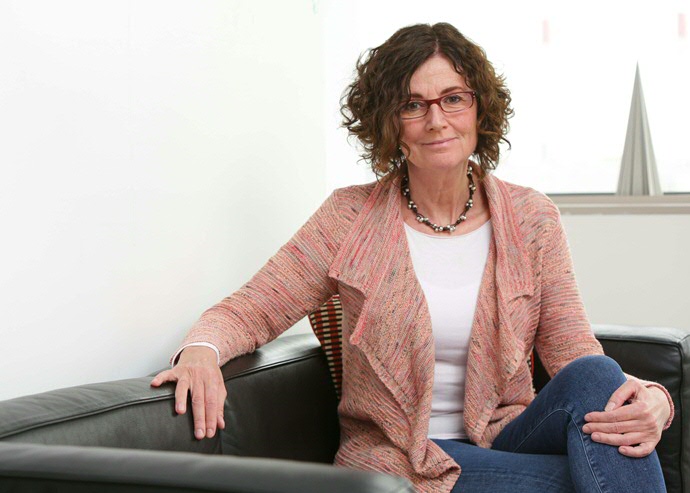Honorary doctor Titia de Lange: Splicing ropes and aging

Titia de Lange has dedicated most of her working life to researching long telomeres – the ends of chromosomes. She was awarded an honorary doctorate in June for her ground-breaking research. De Lange’s first experiment as a PhD student, under the supervision of Piet Borst at the Netherlands Cancer Institute, focused on telomeres. It was 1981 and telomeres were an unknown entity. We now know that telomeres play a role in the ageing process and also – thanks to De Lange’s research – why, during cell processes in which gaps in the DNA strands are recognized and repaired, a telomere is not identified as a DNA breakage.
Text: Bert Platzer. This article has been taken from our alumni magazine Broerstraat 5.
Shoelace
‘I was hooked on telomeres right from the start,’ says De Lange on the phone from New York. ‘The more that I find out about them, they more intriguing they become. Thank god, otherwise it would get quite boring.’ We talk to each other in English; after 34 years living in America, De Lange now finds it much easier to express herself in English than Dutch. ‘I can still speak Dutch, but not now at half past eight in the morning!’ Whatever you do, don’t mention to De Lange the metaphor that telomeres are like the plastic protective bits at the end of shoelaces. ‘The only thing that the ends of your shoelaces do is stop them from fraying, okay? They don’t protect the shoelace from being tied or fastened to another shoelace.’ Right. Got it. Luckily, De Lange has a better analogy – splicing a rope: ‘Sailors do it. They make a loop in a rope by disentangling the end and splicing it back into the rope. That’s what a telomere does. It hides the end of the chromosome from all the mechanisms and processes that detect DNA ends.’
Biology
Although as a child De Lange liked to study frogs and insects in the garden, she actually wanted to study chemistry. But, according to her brothers, that was simply not done. ‘Like, women don’t study chemistry, come on! At the time, there were no female lecturers in the exact sciences, either. Biology was less affected by that. And the fact that my maternal grandmother was a biologist must have subconsciously influenced my decision to go down that route. Her grandmother obtained her PhD in 1911 under the supervision of the well-known scientist Hugo de Vries, but then got married and became a housewife. When her daughters left home, she became a successful limnologist (freshwater scientist, BP).’
American hospitality
This brings us to the theme of this year’s UG anniversary celebrations – All Inclusive. As far as inclusiveness is concerned, De Lange found Americans to be very hospitable and welcoming when she started working at the University of California following her PhD. ‘The majority of the lab was American, but foreigners were welcomed enthusiastically. This is partly down to geography. When Americans go to university or find a job, most move to another state, often thousands of miles away from their family and old friends. They are used to making new friends.’ De Lange, who has been working at Rockefeller University in Manhattan since 1990, no longer feels like a foreigner, but a New Yorker. ‘Americans know what that means, namely that you are part of a very multicultural, international community. New York has its own culture.’ So, for Americans, does this mean that you are a loudmouth? ‘Probably, and it’s most likely because New York was originally Dutch,’ replies De Lange. ‘Much of the New York attitude and philosophy is very Dutch. That’s normal for me, because the Dutch are also very...,’ De Lange pauses for a moment, ‘frank’.
Video: Why the UG awarded an honorary doctorate to Titia de Lange
| Last modified: | 12 March 2020 9.44 p.m. |
More news
-
13 May 2024
‘The colourful cells of petals never get boring!’
Most people will enjoy colours in nature. However, the interest of evolutionary biologist Casper van der Kooi goes much further: he studies how flowers, birds, butterflies, and beetles get their colours. He also studies how these colours are used...
-
13 May 2024
Trapping molecules
In his laboratory, physicist Steven Hoekstra is building an experimental set-up made of two parts: one that produces barium fluoride molecules, and a second part that traps the molecules and brings them to an almost complete standstill so they can...
-
07 May 2024
Lecture with soon to be Honorary Doctor Gerrit Hiemstra on May 24
In celebration of his honorary doctorate, FSE has invited Hiemstra to give a lecture entitled ‘Science, let's talk about it’ on the morning of 24 May
